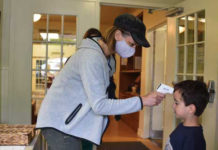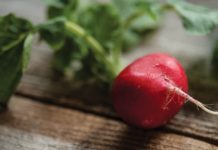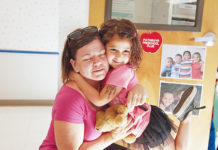
Prepare for the Peak! For children with asthma, back to school also heralds the September Asthma Peak, the time when the most ER visits related to children\’s asthma occur.
For children up to age 11, asthma rates have increased from 11 percent in 1994 to 13 percent in 2000. Between 20 and to 25 percent of emergency hospital visits relating to children’s asthma attacks occur in September. For this reason, it is important for families to prepare for the September Asthma Peak.
What causes asthma?
Asthma is a chronic inflammatory process within the airways that is often aggravated by allergic reactions to environmental triggers (such as dust mites) or physical triggers (such as the common cold or exercise).
Risk factors include a family history of allergy, eczema, or asthma; second-hand smoke exposure; and house dust and dust mites, as well as premature birth (born at fewer than 36 weeks of gestation).
Asthma is often caused by the cascade of events following an allergic reaction in the airways. In an attempt to eliminate the foreign substance, the immune system releases histamine, causing the person to sneeze, cough, and experience watery eyes and constriction of the bronchial smooth muscles. Those affected also experience difficulty exhaling.
September asthma triggers
In September when children go back to school, the rates of rhinovirus (the common cold) increase, which is a major trigger for asthma. Other triggers children are often exposed to in September include dust mites, animal dander, molds, and pollens. Asthma triggers can be allergic or nonallergic, and it is important for you and your child to understand the best means for controlling exposure or avoiding risk.
Asthma symptoms
Asthma symptoms and their severity can be as individual as your child. However, asthma generally presents itself as one or more of these four symptoms: wheezing, coughing, feeling short of breath, and/or tightness in the chest.
It is important to remember that asthma symptoms can be mild or severe, they can vary between individuals, they can flare up and disappear for extended time periods, and they can vary from one asthma attack to the next. Mucus is produced and accumulates, further narrowing the airways and making it difficult to breathe. For young children, a cough is frequently the only symptom.
Diagnosing asthma
In order to diagnose your child with asthma, it is important to visit your health care practitioner to test your child properly. General history and a physical exam will provide preliminary information and will guide your health care practitioner in suggesting further testing requirements. Children age five and older can be tested with spirometry, a simple breathing test to determine their lung function.
Sometimes, the asthmatic reaction to an allergen can be delayed. This type of allergy is more difficult to diagnose because the asthma symptom may not appear until many hours following the exposure to the allergen. There is an in-office test available through your health care practitioner that may be helpful to determine the cause of an asthma reaction.
Prepare your child for the September Asthma Peak
Prevention and awareness are key factors in reducing your child’s risk of an asthma attack in September. Remind your child that washing his or her hands frequently will help reduce the risk of catching a cold. Eliminate any known food allergies or sensitivities that may worsen asthma due to increased inflammation burden. Have your child carry an inhaler (if one has previously been prescribed) in case of an emergency.
Parents may wish to create an action plan for the school or daycare so they are aware of how to best help your child during an asthma attack. This plan should include a brief health history, his or her current medication and how to take it, asthma symptoms to watch for, and a list of triggers that make your child’s asthma worse.
How is asthma treated?
Naturopathic medicine can offer many options in the treatment of childhood asthma by addressing the underlying cause of the inflammation and the body’s overproduction (immediate onset) of immune reactions to various foods or environmental elements. For instance, once offending foods are determined, a diet of nonreactive foods may be suggested to lower the inflammatory process in children’s young bodies.
The goal of moderating the inflammation is to avoid the September Asthma Peak. The next step is to identify and recognize the particular child’s asthma triggers. Avoiding the triggers is the ideal, but when that is not possible, the goal is to reduce the child’s sensitivity to these triggers. Possible treatments include acupuncture, supplements, and herbal medicine. Use caution and consult a qualified health care practitioner before implementing any of these approaches.
Acupuncture, an ancient Chinese modality, has been shown to be helpful in reducing asthmatic symptoms in several recent studies. Supplements may include omega-3 fatty acids, vitamin C, and zinc (see sidebar).
Herbal medicine is used for prevention and treatment of chronic asthma symptoms; however, it is not recommended to use any herbal remedies when your child is having an acute asthma attack. Two examples of herbs are astragalus and licorice root. Astragalus is a Chinese herb that is thought to be useful for strengthening the lungs. Astragalus should not be given if the child has a fever or any type of infection. Licorice root may act as a natural anti-inflammatory. Do not give licorice root if your child has elevated blood pressure.
Conventional medicine treats both the management of acute asthma attacks as well as prevention and long-term control of asthma. One inhaler that is generally prescribed is a short-acting rescue bronchodilator to open the airway passages and allow the patient to breathe. Other medication that may be prescribed includes inhaled steroids, which are meant to provide long-term control.
Be proactive
It is important to be proactive when your child has asthma. Don’t wait for the next emergency to think about the right type of treatment—take steps now to reduce the ongoing inflammation through diet and/or supplements. Educate the adults who are around your child and ensure they are aware of how to implement the asthma plan for your child.
Supplements and asthma symptoms
These supplements are intended as general guidelines; please discuss their possible benefit to you with your health care practitioner.
Omega-3 fish oil
Omega-3s are often recommended in naturopathic medicine as a maintenance supplement all year round to help balance inflammatory pathways. The anti-inflammatory effect of EPA (a type of omega-3 fatty acid) may ease the underlying lung inflammation that triggers an asthma attack.
Vitamin C
Vitamin C acts as an antioxidant that may help to counteract inflammation and oxidative stress imposed on the lung tissue.
Zinc
Zinc is an important co-factor in the regulation of T-cell lymphocytes (which play a role in the allergic response). It may also act on the level of the gene to decrease the expression of proinflammation.
Foods and asthma symptoms
Some foods may help to control asthma symptoms, while others may act as asthma triggers. This list is not individualized for your child and provides general guidelines only.
Foods to eat
- garlic
- onion
- wild fish
- fruits
- vegetables
Foods to avoid
- peanuts and other nuts
- dairy
- egg
- shellfish
- food colourings and additives
- sulphites





























